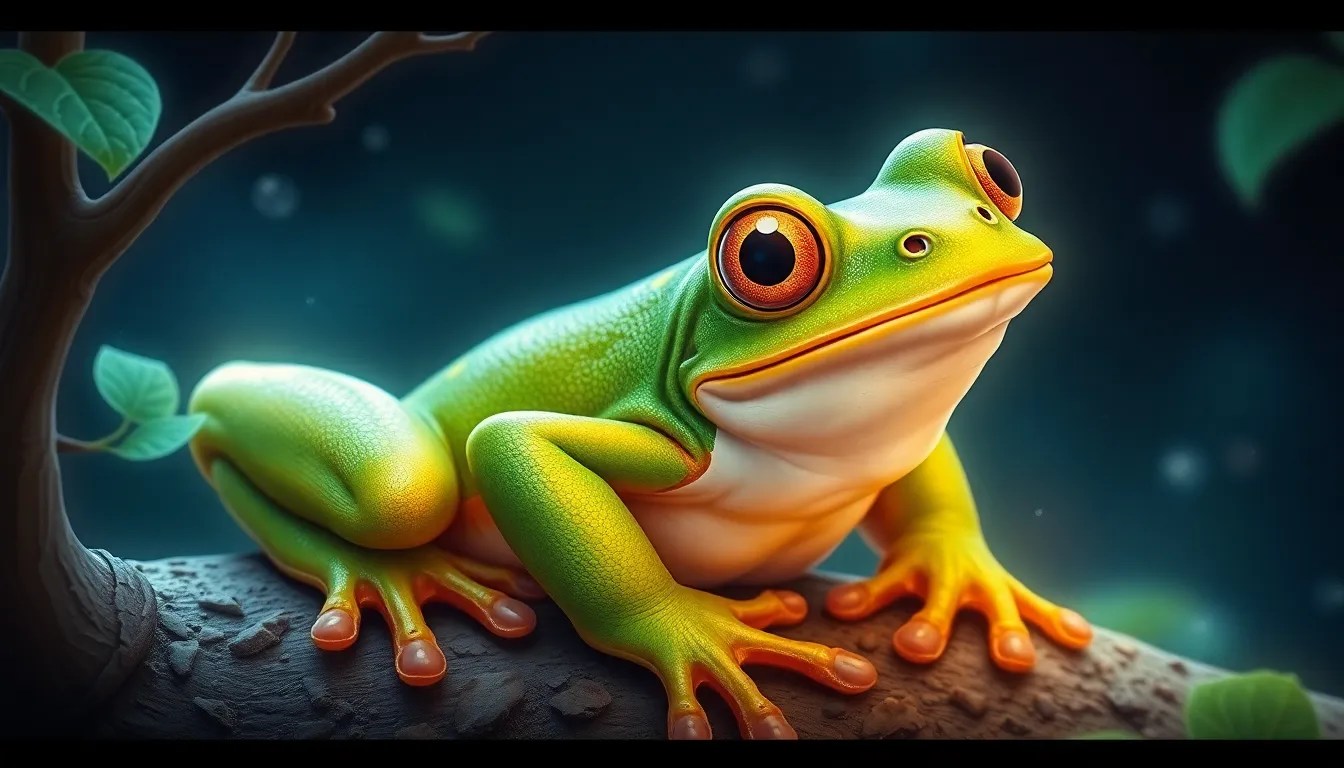A Twist in the Tale: Korea’s Enchanted Tree Frog and Its Surprising Prosperity
I. Introduction
Korean mythology is a rich tapestry woven with tales of gods, spirits, and supernatural beings, each with its unique significance in the cultural framework of Korea. Among these enchanting stories, the enchanted tree frog stands out as a unique symbol, embodying not only the magic of nature but also the prosperity it can bring to those who honor it. This article delves into the legend of the enchanted tree frog, exploring its origins, symbolism, and the surprising prosperity that is believed to be linked to this remarkable creature.
II. The Legend of the Enchanted Tree Frog
The legend of the enchanted tree frog has its roots deeply embedded in Korean folklore. Traditionally, these frogs are depicted as magical beings that can transform the fate of those who encounter them. The tale often begins in a small village plagued by drought and misfortune. In one version of the story, a humble farmer discovers a glowing tree frog while tending to his fields. When he saves the frog from a predator, it rewards him with a bountiful harvest, leading the village to thrive once more.
The enchanted tree frog is said to possess several magical attributes:
- Ability to Grant Wishes: It is believed that if one captures the frog without harming it, their wishes for prosperity will be granted.
- Bringer of Rain: The frog is often associated with rain, symbolizing fertility and life, especially in agricultural contexts.
- Guardian Spirit: Some tales depict the frog as a guardian of the harvest, protecting crops from pests and drought.
Key characters associated with the enchanted tree frog include the farmer, who embodies humility and kindness, and the frog itself, representing the mystical forces of nature that reward virtue.
III. Symbolism of the Tree Frog in Korean Culture
The tree frog holds significant symbolic meaning in Korean culture, primarily representing fertility and prosperity. It is often depicted in various forms of art, literature, and traditional practices:
- Art: Tree frogs are commonly featured in paintings and sculptures, symbolizing abundance and happiness.
- Literature: Folklore and poems often reference these frogs as messengers of good fortune.
- Traditional Practices: In some rural areas, tree frog motifs are integrated into agricultural rituals to invoke a good harvest.
When compared to other cultures, the interpretation of frogs varies. For example, in many Western cultures, frogs are often seen as omens of transformation or change, while in Eastern traditions, they symbolize wealth and fertility, aligning closely with the Korean perspective.
IV. Ecological Role of the Tree Frog
The enchanted tree frog thrives in Korea’s diverse ecosystems, from lush forests to rice paddies. This amphibian plays a crucial role in maintaining ecological balance:
- Habitat: Tree frogs are commonly found in wetlands, rice fields, and wooded areas, where they thrive in moist environments.
- Pest Control: As natural predators, they help control insect populations, contributing to healthier crops and gardens.
- Indicator Species: The health of tree frog populations can indicate the overall health of their ecosystems, serving as a barometer for environmental change.
V. The Surprising Prosperity: Myths and Reality
The connection between the enchanted tree frog and prosperity is not just a myth; it resonates with the experiences of local communities. Many farmers attribute their successful harvests to the presence of these frogs, believing that their calls signal the arrival of rain and fertility. Anecdotes of farmers who have revered these creatures often highlight:
- A marked increase in crop yield after observing tree frogs in their fields.
- Community gatherings celebrating the frog’s return during the rainy season, reinforcing communal bonds and shared beliefs.
- Traditional practices inspired by the legends, such as planting crops in alignment with the frog’s breeding cycles.
VI. Conservation and Challenges
Despite their cultural significance and ecological roles, enchanted tree frogs face numerous challenges today. The current status of their population is concerning:
- Habitat Loss: Urbanization and agricultural expansion have led to the destruction of their natural habitats.
- Pollution: Pesticides and chemicals in farming practices pose serious threats to their health and survival.
- Climate Change: Changes in climate patterns affect their breeding and feeding habits.
Conservation efforts are underway to protect this mystical species, including habitat restoration projects and community education programs aimed at fostering appreciation for the enchanted tree frog.
VII. Modern Interpretations and Cultural Revival
Contemporary artists and writers are reimagining the enchanted tree frog myth, breathing new life into its stories. This cultural revival is evident in:
- Artworks: Modern interpretations of tree frogs in paintings and installations highlight their beauty and ecological importance.
- Literature: New tales and adaptations of the frog legend resonate with younger generations, emphasizing themes of environmental stewardship.
- Festivals: Events celebrating the enchanted tree frog are becoming popular, with activities that promote awareness of their ecological role.
These initiatives not only preserve the folklore but also reinforce the enchanted tree frog’s role in modern Korean identity.
VIII. Conclusion
The enchanted tree frog holds a significant place in both Korean mythology and ecology, representing the intertwining of culture and nature. As we reflect on its importance, it becomes clear that folklore can inform modern environmental practices, urging us to appreciate and protect this mystical creature. By honoring the enchanted tree frog, we can ensure that its legacy and ecological role endure for future generations.

